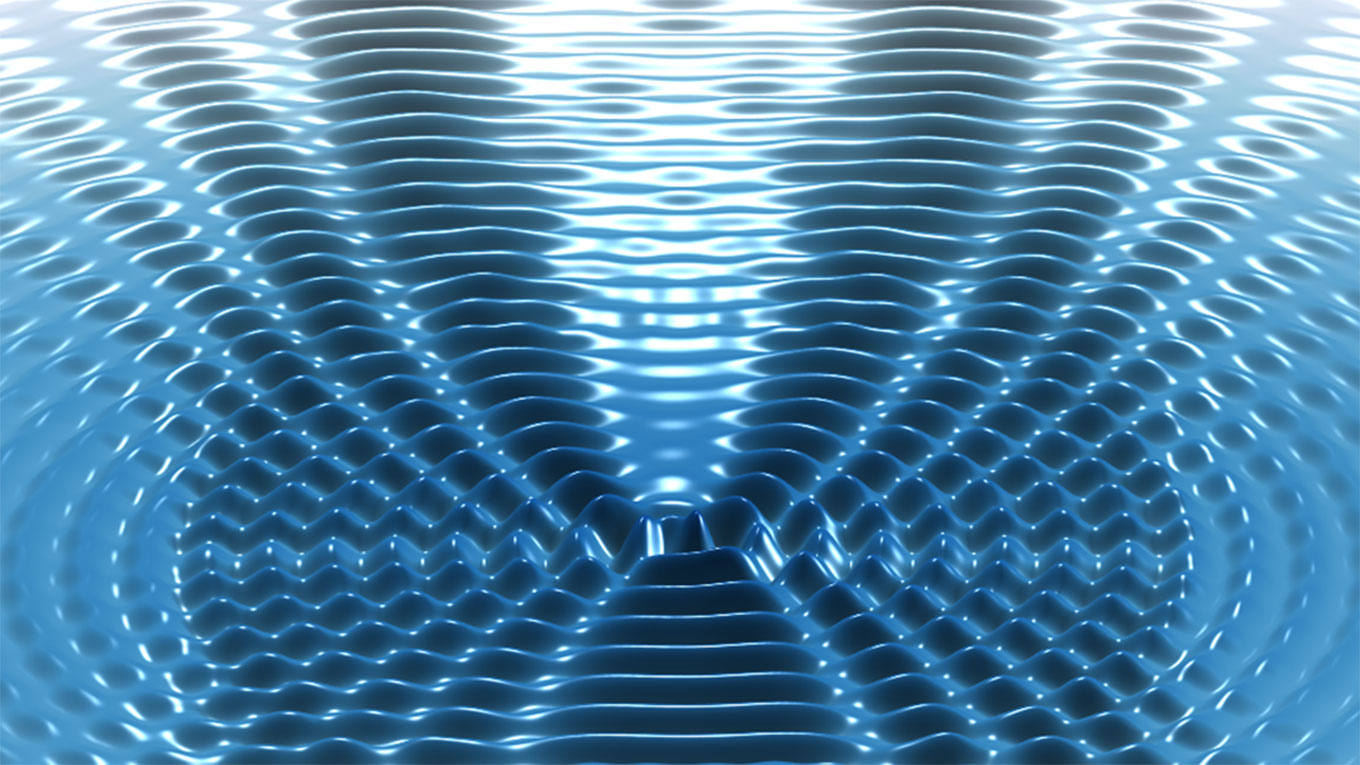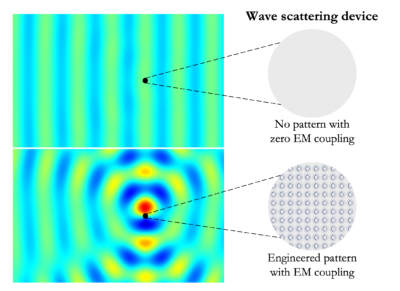 Illustration of wave-scattering phenomenon with EM coupling. (Image courtesy of the Gu Lab)
Illustration of wave-scattering phenomenon with EM coupling. (Image courtesy of the Gu Lab)Under the radar
Berkeley researchers have discovered a way to improve the wave-scattering abilities of piezoelectric materials, a finding that may lead to advances in noise cancellation, medical and stealth technologies.
In a study published in the Journal of Applied Physics and selected as an editor’s pick, the researchers demonstrated that electro-momentum (EM) coupling, a newly discovered phenomenon in engineered piezoelectric materials, can be used to significantly enhance wave-scattering performance.
“Until recently, engineers had to make trade-offs between a piezoelectric device’s wave-scattering performance, its size and frequency range,” said Grace Gu, assistant professor of mechanical engineering and principal investigator of the study. “Our findings show that by controlling EM coupling, we can mitigate these trade-offs and design piezoelectric materials and devices for more efficient and tunable wave manipulation.”
Piezoelectric materials, which can be natural or manufactured, possess the unique ability to convert mechanical energy — such as pressure, strain or twisting — into electrical energy (and vice versa). In addition to being used in sensors and actuators, these materials can act as wave scatterers, by colliding with acoustic and electromagnetic waves and inducing them to change direction and motion.
Postdoctoral researcher Jeong-Ho Lee, graduate student Zhizhou Zhang and Gu demonstrated that EM coupling can dramatically influence wave-scattering performance, making it a game-changer for the future design of engineered piezoelectric materials, also known as metamaterials.
“The engineered piezoelectric material with EM coupling displayed far better wave-scattering performance than the conventional design [without EM coupling],” said Lee, first author of the study. “In fact, EM coupling proved to have the same level of impact on performance as the scatterer’s shape and size, which has long been thought to be the leading factor in wave-scattering performance.”

Comparison of wave-scattering performance between a conventional design with no EM coupling (top) and an engineered design with EM coupling (bottom). (Photo courtesy of the Gu Lab)
The researchers also discovered the maximum bounds of EM coupling in wave-scattering, which will aid in the design of future piezoelectric materials. “This information will potentially help in estimating the wave-scattering performance for piezoelectric metamaterials in various applications, such as acoustic sensing and energy harvesting,” said Gu.
In addition, the team demonstrated how EM coupling could be used to enable wave manipulation and tunable scattering-cloaking, in which waves of different frequencies are essentially repelled or blocked. Gu envisions this new discovery helping to expedite the switchable blocking of audio waves for next-generation noise-canceling devices.
The researchers are already looking at next steps. “Based on this study, we would like to investigate other areas, such as the development of a new design methodology for piezoelectric metamaterials that maximizes EM coupling,” said Gu. “Due to the vast and complex design space, our team aims to develop a deep learning model to help us interpret the underlying physics and accelerate the design process.”
This study was supported by the Defense Advanced Research Projects Agency, the Office of Naval Research and National Science Foundation XSEDE computing resources.
